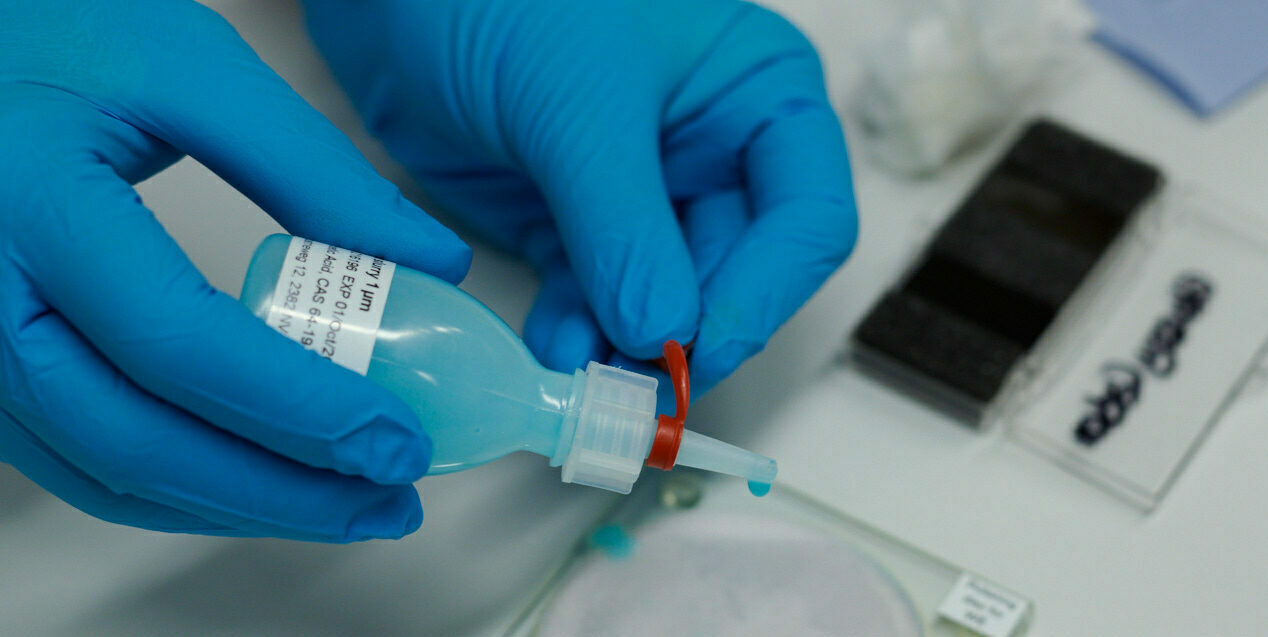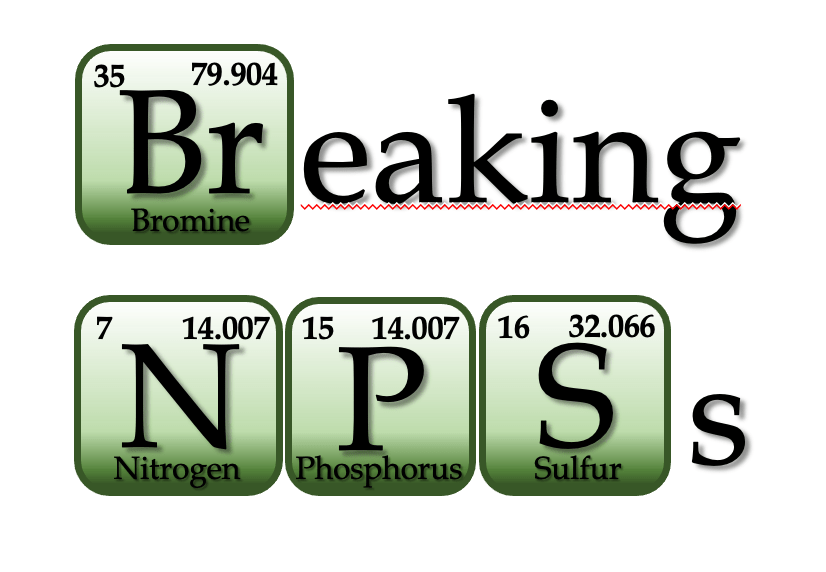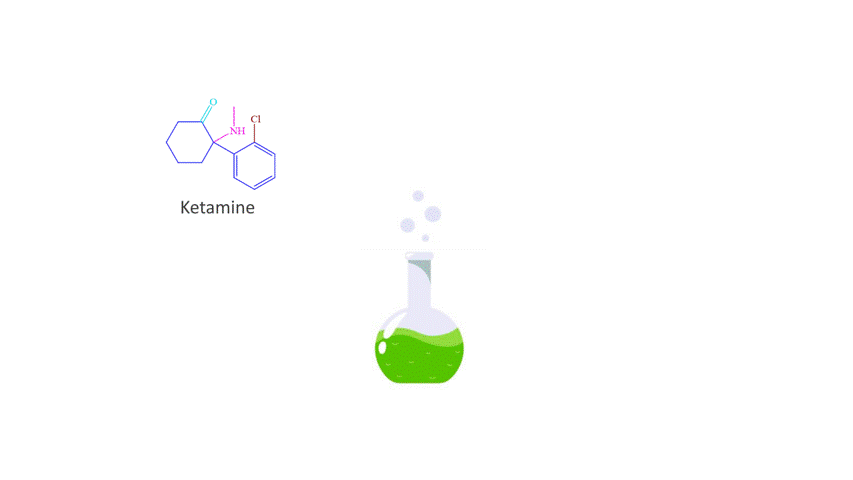
Chemical Crusaders: Unmasking the Secrets of Psychedelic Potions for a Safer Society!
Imagine a person who is a bit like Walter White in the TV series Breaking Bad : this person, let’s call him Walt, has basic knowledge of chemical substances and their production and desperately wants to earn some money. In contrast to the original Walter, he more or less wants to do so as legally as possible, but also does not shy away from crossing the border lines that span the spaces between legal – immoral –illegal. So what does Walt do?
Quite simply, he thinks about where there would be a market with a big margin, and how he can produce psychoactive substances that are not (yet) technically forbidden.

So much about Walt. Unfortunately, there are a lot of drug dealers and drug producers who follow exactly this train of thought: they look at the structure of known psychoactive substances like cannabis, slightly change their molecular structure and sell this new substance, e.g. an artificial cannabinoid, on the black market.
This common practice brings not only the usual serious problems of drug trafficking and consumption for users, their environment, and the police, but also a bouquet of additional challenges for the state and society. Let’s learn why and how chemical research helps to address the threats and problems.
New Psychoactive Substances (NPSs) – How do They Stand Out Among Psychoactive Drugs?
Starting from the chemical structure of known psychoactive compounds, criminals like Walt often introduce minor molecular structural changes in order to obtain new chemical analogues, sometimes with higher potency.

Those analogues are called “New psychoactive substances”: NPSs. Their attribute ‘new’ is not related to their age (as most have already been synthesized during the last decades, typically stemming from known psychoactive compounds), but indicates the phenomenon that these kinds of drugs have recently become accessible and widely abused as chemical compounds designed to mimic established illicit drugs. Hence, NPSs are novel narcotic or psychotropic drugs that might represent a public health threat, and are not yet controlled by the United Nations drug conventions.
NPSs and the Cat & Mouse Game of Avoiding the Law
As some of the NPSs inevitably become banned, the synthesis of other newer chemical structures by drug producers goes on, in a continuous cat-and-mouse process of avoiding the law: drug producers have a high motivation for endlessly synthesising new psychoactive substances as legal replacements for existing drugs, as their sale carries a much lower potential for criminal consequences for the manufacturer, dealer, and user – not to mention, their production is usually much cheaper.
It therefore doesn’t come as a surprise that the number of NPSs on the market is increasing precisely as a result of the efforts to circumvent the law: the European Monitoring Centre for Drugs and Drug Addictions monitors 880 new psychoactive substances, of which 52 were identified just in 2021. Around seven tons of new psychoactive substances were seized that year, with origin traced to both within and outside Europe. This is not only a problem for law enforcement, but also for drug users and the society in general. Let’s have a closer look at why:
Why People Use Drugs and What it Does to Them and Our Society
The reasons for which people consume drugs are manifold: In the pursuit of pleasure, stress reduction, mood improvement, coping with mental distress or simply because of peer pressure or their social environment, individuals engage in drug consumption. They do this even though the desired positive effects are linked to the risk of euphoria, hallucinations and physical or cognitive impairment. In certain settings, drug consumption makes their users engage in violent acts, risky sexual behaviors, operating a vehicle, or other similar actions that can lead to harm or even death for themselves or others.
Moreover, most drugs quickly lead to psychological and/or physical dependence: developing dependence is linked to chronic consumption, most often of multiple drugs, and is very difficult to overcome. The longtime use of various drugs has an even higher risk of toxic effects, overdose, multiple drug addiction, and the contracting and spreading of blood infectious diseases. Drug users show high rates of school dropout, unemployment, homelessness, involvement in criminal activities, and mental health problems. The societal impact of drug use extends beyond the risks linked to the individual user, affecting their family, friends and the community.
Why Using NPSs Poses Even Greater Risks Than Ordinary Drugs
Although everyone’s body reacts differently to the use of common psychoactive substances, users and doctors know about their most common effects on mind and body. Hence, when people buy “common” drugs, they usually know what they are getting (into). Unfortunately, especially users who have already developed an addiction and are in desperate search for ‘their substance’ face a high risk of stumbling upon adulterated vegetable matter and fake medicines: recent statistics show a significant overlap between the black market of ‘traditional’ illegal drugs and the ‘gray’ market of new psychoactive substances (NPSs). Why? Well, as we have already learned, NPSs are cheaper, easily accessible, and not yet controlled by legal entities. Unfortunately, they also come along with a higher likelihood of unpredictable toxic effects, particularly when overdosing.
What Happens When an NPS-Intoxicated Patient Reaches an Emergency Healthcare Unit?
Without reliable clinical and pharmacokinetic studies to provide critical information regarding the effects of their consumption, NPS users face potentially deadly consequences. Medical personnel often feel helpless in the face of unique combinations of symptoms and behaviour that intoxicated patients display. Healthcare providers deal with the symptoms as they find them, highly unpredictable and without knowing if additional consequences might appear later.
This is particularly problematic because:
- NPSs are available in a great variety of forms and are marketed as legal highs, research chemicals, food supplements, natural products or bath salts.
- Their composition can vary significantly even for allegedly the same product or mix, since the products are often adulterated.
- After consumption, NPSs can follow a complex (and likely not fully understood) metabolism that leads to various metabolites with a short half-life, making it difficult to identify the initial substance in a patient with confused memory, unconsciousness or that furthermore might be afraid of the legal consequences of admitting the consumption.
How Electrochemical Research Using Mass Spectrometry(EC/MS) Can Help
Research with EC/MS has many advantages for negotiating individual and societal risks provoked by the consumption of artificial cannabinoids and other NPSs. As NPSs are not controlled by the international conventions, their legal status differs among countries, with some declaring controlled substances or entire sets of chemicals based on chemical similarity illegal, in order to include substances not explicitly made illegal by law. Electrochemistry coupled to mass spectrometry comes in handy as a rapid, cost-effective and simple technique for structure identification among compounds with very similar structures, and for predicting the transformation and metabolization processes that take place inside the human body after the consumption of newly developed compounds, such as NPSs.
The goal of my research is to simulate the metabolic reactions of certain NPSs in order to correlate their structures with the toxicological effects experienced by NPSs users. Testing NPSs in vivo would involve sensitive ethical aspects. In addition, such methods (as well as in vitro approaches) have drawbacks such as the complexity of biological matrices, the time needed for incubation, the poor stability of samples and the relatively high overall costs.
Therefore, to overcome these limitations, my research colleagues and I use a purely instrumental analytical approach to electrochemically simulate the metabolic transformations of NPSs in the human body. This furthermore avoids animal and human testing, and adheres to green chemistry principles due to the possibility to re-use the electrochemical cells and the electrodes, as well as due to low flow-rates of reagents and being able to run tests without generating biological waste.

How the Electrochemical Simulation of NPSs in the Human Body Works
In our experimental work, we connect an electrochemical cell to a high resolution mass spectrometer allowing for a fast and accurate detection of the electrochemically generated species. Based on detected signals, we determine the structure of each compound formed inside the electrochemical cell. We use liquid chromatography as well as ion-mobility mass spectrometry to separate the species, and then conduct fragmentation experiments to confirm the proposed chemical structure.
These electrochemical techniques not only allow us to simulate the formation of metabolites for NPSs, but also enable the synthesis of a chosen NPS metabolite in a fast, cost effective and efficient manner.
Future Directions of Research on New Psychoactive Substances
Of future interest for our work is to organize NPSs and their metabolites in a database accessible to medical staff and law enforcement entities. This could expedite emergency healthcare assistance to intoxicated patients and would support NPS-related forensic work as well. By automation of the processes, our approach could be refined and extended to the metabolic studies of other NPSs, as well as to other compounds of legal interest, such as doping substances – themselves forming another growing illegal market.
